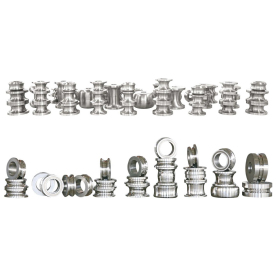[Flying Saw Machine with Automatic Feeding]Exploring the Efficiency and Innovation of the Flying Saw Machine with Automatic Feeding: Revolutionizing Industrial Cutting Processes
News 2024-11-18

Exploring the Efficiency and Innovation of the Flying Saw Machine with Automatic Feeding: Revolutionizing Industrial Cutting Processes

Exploring the Efficiency and Innovation of the Flying Saw Machine with Automatic Feeding: Revolutionizing Industrial Cutting Processes
Understanding the Flying Saw Machine
A flying saw machine is designed to perform high-speed cutting operations, typically on materials such as metal, wood, or plastic. Unlike traditional saws that require the material to be manually positioned for each cut, a flying saw incorporates sophisticated technology that allows it to 'fly' through the cutting process. This mechanism is especially beneficial for industries where large volumes of material must be cut quickly and accurately, such as metal fabrication, woodworking, and construction.
The Role of Automatic Feeding
The automatic feeding system further enhances the efficiency of the flying saw machine. This system is designed to continuously supply the material to the saw without requiring constant manual intervention. It employs various mechanisms, including conveyors, rollers, and robotic arms, to consistently position and feed the material into the cutting zone. By minimizing the need for operator input, the automatic feeding system reduces labor costs and enhances safety by keeping operators away from potentially hazardous cutting areas.
Benefits of the Flying Saw Machine with Automatic Feeding
1. **Increased Productivity**: One of the most significant advantages of the flying saw machine with automatic feeding is its ability to boost productivity. These machines operate at high speeds, allowing manufacturers to cut materials much faster than traditional methods. The automatic feeding system ensures a continuous cycle, minimizing downtime between cuts and maximizing output.
2. **Precision and Accuracy**: Precision is critical in manufacturing, and the flying saw machine delivers. With advanced computer numerical control (CNC) technology, these machines provide exact measurements and consistent cutting angles. The integration of automated feeding systems ensures that the material is fed in a precise manner, mitigating the risk of human error and producing uniform results.
3. **Reduced Labor Costs**: With automation at the forefront, the reliance on manual labor is significantly reduced. Fewer operators are needed to manage the cutting process, leading to substantial labor cost savings. Additionally, automated systems require less training, allowing companies to allocate resources more effectively.
4. **Material Conservation**: The accuracy and efficiency of the flying saw machine help to reduce material wastage. By ensuring that cuts are made precisely where needed, manufacturers can optimize their material usage, leading to cost savings and reduced environmental impact.
5. **Versatility**: Flying saw machines with automatic feeding can handle various materials and thicknesses, making them suitable for diverse applications. Whether cutting pipes, sheets, or structural components, these machines can adapt to different cutting requirements, providing manufacturers with a versatile solution.
Applications Across Industries
The flying saw machine with automatic feeding is applicable in many industries. In metal fabrication, it is commonly used for cutting pipes and profiles, allowing for quick and accurate operations in production lines. In the woodworking industry, this machine excels in cutting planks and sheets, particularly in settings where bulk processing is required. Additionally, the construction sector benefits from its ability to handle a variety of materials on-site, including metal siding and structural steel.
Conclusion

